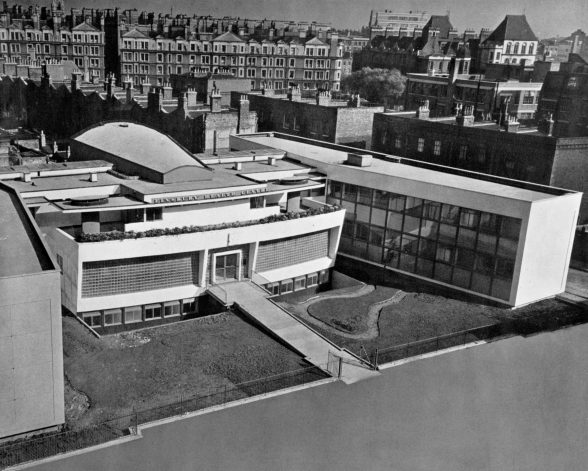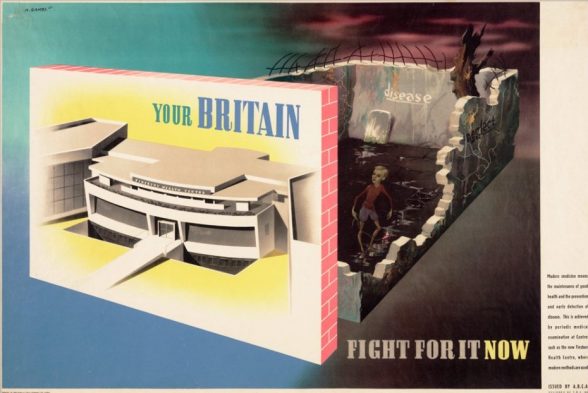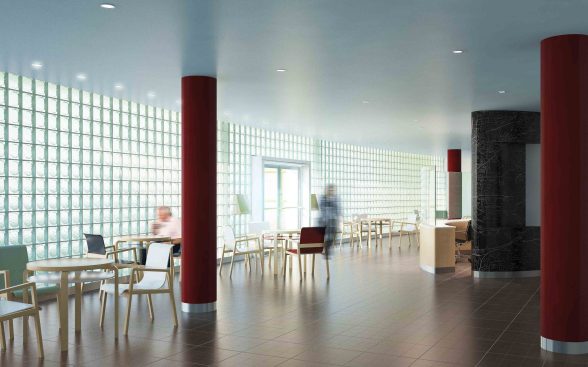This website uses cookies
This website uses cookies to enable it to function properly and to analyse how the website is used. Please click 'Close' to accept and continue using the website.



Image: Avanti Architects
Finsbury Health Centre, the Grade I listed modernist masterpiece that anticipated the foundation of the NHS, is set to undergo a £1.25 million restoration, led by Avanti Architects and with support from C20 Society.
Designed by Georgian-British architect Berthold Lubetkin (1938), Finsbury Health Centre has been described as arguably modern architecture’s most important single achievement in England in the first half of the 20th century. The realisation of a radical humanitarian brief for a deprived community in a new building-type, it encapsulated all of modernism’s progressive ideals – social, technical, aesthetic – combined with a political and architectural conviction unequalled by any other work of its era*. Indeed, it preceded the foundation of the National Health Service by a clear decade and set a benchmark for the modernist design of many subsequent health centres and hospitals.
Of particular concern to architect and client alike was to create a welcoming ambiance that would overcome the apprehension and intimidation typically associated with traditional hospital environments. It was originally designed without a reception desk and to feel more like a club, where anyone could stroll in without an appointment, read a newspaper, and be gradually absorbed into the ethos of better health.
Lubetkin famously believed ‘nothing is too good for ordinary people’ and he characterised the buildings form as: “[a] curving façade and outstretched arms, intended to introduce a smile into what in fact is a machine.”

Photo: Maltby, source Lubetkin. Courtesy of John Allan.
NHS Property Services (NHSPS), the building’s owners since 2013, have been working with Avanti Architects and consulting with C20 Society to develop a phased programme of works that would secure the envelope and render watertight the 85 year old landmark, which has suffered from water ingress and general deterioration in recent years.
Following essential maintenance to the roof in June 2021, the next phase of works focusses on elements of the façade that have fallen into disrepair, including the glazing, spandrel panels, glass blocks and façade tiles. The upgrading and selected replacement of the main building fabric has required painstaking work to source and match suitable materials, in particular the reinstatement of the original Thermolux glass, a propriety glass sandwich panel with a coloured spun silk fibre interlayer. None of the original panels remain, having been damaged by wartime sandbagging, with the architects sourcing replacements from the original Swiss manufacturer.
Avanti first surveyed the building back in 1988, followed by initial repair and conservation works in 1994, with a replacement of roof coverings, specialist concrete repair, facsimile retiling and signage, and restoration of the distinctive curtain wall façade. This latest phase of works closely follows the ’94 template and aims to complete a project first started some 25 years ago.
The overriding brief from NHSPS is to substantially improve the condition of the Centre and carry out sensitive repairs to allow for the continued use of the building for healthcare provision, ensuring it can fully accommodate the healthcare needs of existing and future residents in the area.

Image: Abram Games/The Jewish Museum
John Allan, former Director of Avanti Architects and consultant on the current project commented:
‘Some may recall the debate at the Royal Academy several years ago, when Finsbury Health Centre was voted the greatest building of the 20th century. So after a ‘pause’ of over 25 years, it is profoundly gratifying now to be able to pick up where we left off, with all the experience we gained in that [initial 1994] phase having fed into the current project. After all the vicissitudes this unique work of Lubetkin has endured over the years, I hope that all people of good will should want to give the proposed project their wholehearted support.’
Catherine Croft, Director of C20 Society added:
‘Much tinier in real life than it appears in photos and war time propaganda posters, Finsbury Health Centre is a mini- masterpiece of modernism. It was Innovative with materials, designed to be flexible and highly serviced to deliver exemplary medical care in an accessible and comfortable environment. This is still a place to make one proud of British architecture and of the NHS. It’s idealistic in all the best and most important ways.’
Fiona Lamb of Avanti Architects stated:
‘Avanti is thrilled to finally be undertaking the next phase of conservation work at Finsbury Health Centre, a project we started over 25 years ago. The phased works follow the re-roofing project completed earlier this year by NHS Property Services which together will help secure this deeply loved resource for its local community.’
* FHC description thanks to John Allan, taken from C20 Society – 100 Buildings 100 Years (p.67)

Image: Avanti Architects

Image: Avanti Architects

Become a C20 member today and help save our modern design heritage.